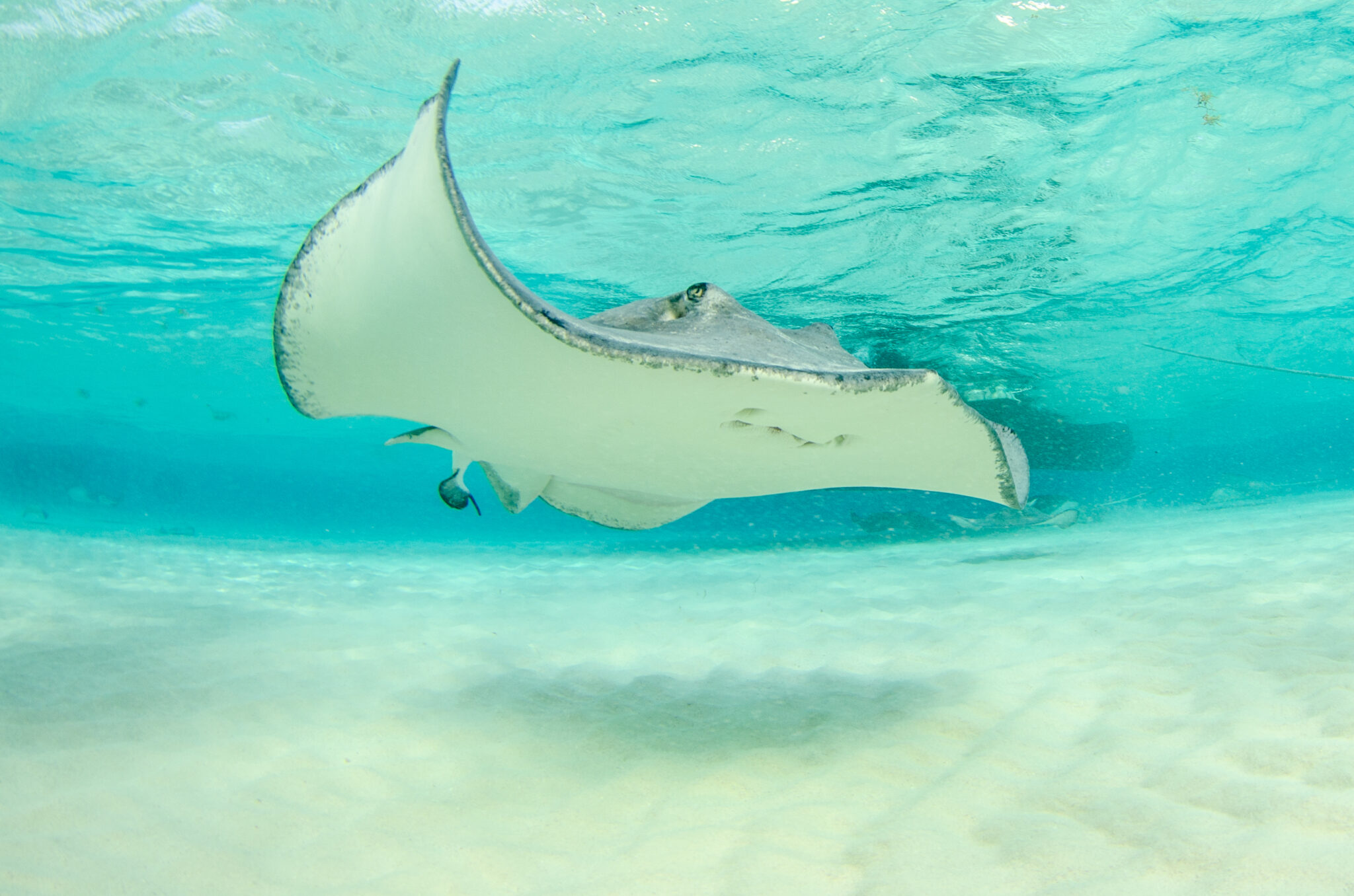For over 100 million years stingrays have graced our oceans. The sheer size and beauty of stingrays have many scuba divers longing to dive alongside them. This also ensures that diving with stingrays remains securely on the top of every diving enthusiast’s bucket list!
But there is one question that is asked time and time again, and that is, ‘’Are stingrays dangerous?’’ The tragic accident of television personality Steve Irwin has left many questioning the safety of diving with stingrays. So, is there a reason to fear them? Let’s debunk the myths from the facts and find out!

Have There Been Many Accidents Caused by Stingrays?
Myth: Many people have been injured by stingrays.
Fact: There have been only 17 recorded deaths caused by stingrays worldwide… ever!
To put this into perspective:
- Cows kill an average of 20 people per year only in the US
- Bees kill an average of 100 people per year only in the US
In fact, statistically speaking, you are way more likely to be killed by a vending machine falling on you than by a stingray!
So, are stingrays dangerous? Catastrophic stingray attacks on humans are extremely rare with only two recorded fatalities in Australia since 1945, and this statistic includes the tragic accident involving Steve Irwin.

Are Accidents Caused by Stingrays or Human Error?
Myth: Stingrays actively seek out humans to attack.
Fact: Stingrays are not naturally aggressive.
It is suggested that the stingray that killed Steve Irwin believed that the television personality was, in fact, a tiger shark. This theory has been validated by cameraman Justin Lyons who was with Steve Irwin at the time of the accident. Lyons stated, “It probably thought Steve’s shadow was a tiger shark, who feeds on them pretty regularly, so it started to attack him.”
Scientific research validates that stingrays are inherently docile creatures, and their primary response to a potential threat is to simply swim away.

Are Stingrays Dangerous?
Myth: Stingrays are completely harmless.
Fact: Stingrays are ordinarily docile creatures, but they must be treated with respect.
It is only when a stingray feels threatened that divers have a cause for concern. Stingrays harbor a barb for one purpose, and that purpose is self-defense. Stingrays only use their barb as an involuntary reflex if they feel threatened and as a deterrent to predators such as sharks.
What is the Code of Conduct When Scuba Diving With Stingrays?
● If walking into water that you know is populated by stingrays, you should do the ‘Stingray Shuffle.’ Slide your feet along the shallow sandy bottom, as this will alert any stingray of your presence, giving them time to swim away. Stingrays live in shallow beach waters, and we must try to alert them of our presence.
● If you spot a stingray when scuba diving, do not crowd the ray. Approach the stingray slowly and avoid excessive noise or flash photography. You must remember you are entering their territory. You should try to maintain a distance of three meters away from the stingray at all times.
● Remember to avoid physical contact with the stingrays.

Saving the Stingray: Conservation Efforts
A major goal of education is the debunking of miseducation. It is becoming increasingly concerning that the death of Steve Irwin in 2006 continues to install a worldwide fear of stingrays, a fear that is frankly unjustified.
Overfishing, habitat loss, and climate change ensure that stingrays face the risk of extinction. Currently 107 species of stingrays are classified as ‘threatened.’
Stingrays are present in the majority of marine ecosystems worldwide and play an integral role in maintaining the health and function of ecosystems.
As PADI scuba divers, we find ourselves in a unique position, and we should strive to:
- Educate others on the importance of respecting stingrays.
- Demonstrate to others how to take the correct precautions when interacting with stingrays.
- Make people AWARE of ways to promote ocean conservation and educate others on how to be environmentally friendly.
If we continue to do this, more and more people will be able to appreciate the beauty of stingrays without fear.

Written by Sophie Keningale
Sophie Keningale works hard to share her passion for scuba diving through her blog posts and hopes to offer useful information for scuba divers. Sophie owns and operates Leagues Ahead Diving in Gran Canaria with her partner James.




